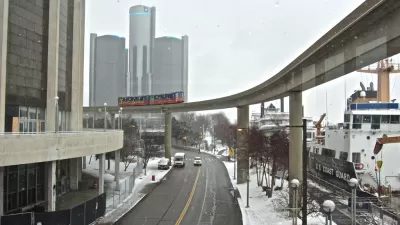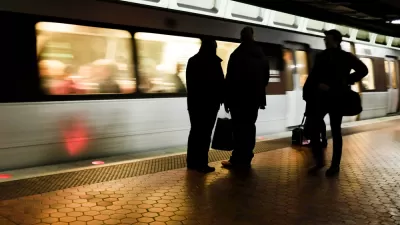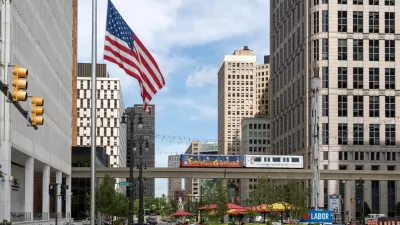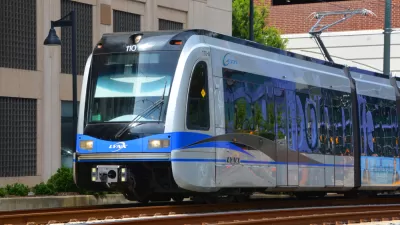Involving four counties and $4.6 billion, the measure proposes a system that could put a million residents (and a million jobs) within a quarter mile of transit.

For a long time, regional transit has been just one more underdeveloped service in southern Michigan. But in November, that will likely change. Angie Schmitt writes, "It took 40 years and 23 failed attempts for Detroit and its suburbs to establish a regional transit agency. They finally won state support to establish the RTA in 2012."
But the Regional Transit Authority of Southeast Michigan can only do so much with its current resources. "Transit service in the region is fragmented and unreliable, even though a quarter of city residents don't own cars. The severity of the problem was encapsulated by the story of James Robertson, whose commute to a factory job in the suburbs required taking two buses and walking 21 miles."
Leading up to the vote this November, "The Detroit region has put together a $4.6 billion, four-county plan to improve transit. The centerpiece is a network of bus rapid transit lines extending out from downtown. Funded by a 20-year property tax increase, the measure would cost the average homeowner in the region about $95 a year."
The plan: four bus rapid transit (BRT) lines connecting Detroit to regional employment centers outside the city proper (as far as Pontiac and Ann Arbor). On top of that, "regional rail" between Ann Arbor and Detroit's downtown.
All signs point to broad regional support for the measure. "Some opposition emerged from the northern suburbs, but key political actors who could have blocked it, like Oakland County Executive Brooks Patterson (the 'Sprawl King') have opted not to."
FULL STORY: Transit Vote 2016: With Historic Decision, Detroit Could Heal Old Divides

Maui's Vacation Rental Debate Turns Ugly
Verbal attacks, misinformation campaigns and fistfights plague a high-stakes debate to convert thousands of vacation rentals into long-term housing.

Planetizen Federal Action Tracker
A weekly monitor of how Trump’s orders and actions are impacting planners and planning in America.

In Urban Planning, AI Prompting Could be the New Design Thinking
Creativity has long been key to great urban design. What if we see AI as our new creative partner?

How Trump's HUD Budget Proposal Would Harm Homelessness Response
Experts say the change to the HUD budget would make it more difficult to identify people who are homeless and connect them with services, and to prevent homelessness.

The Vast Potential of the Right-of-Way
One writer argues that the space between two building faces is the most important element of the built environment.

Florida Seniors Face Rising Homelessness Risk
High housing costs are pushing more seniors, many of them on a fixed income, into homelessness.
Urban Design for Planners 1: Software Tools
This six-course series explores essential urban design concepts using open source software and equips planners with the tools they need to participate fully in the urban design process.
Planning for Universal Design
Learn the tools for implementing Universal Design in planning regulations.
Gallatin County Department of Planning & Community Development
Heyer Gruel & Associates PA
JM Goldson LLC
City of Camden Redevelopment Agency
City of Astoria
Transportation Research & Education Center (TREC) at Portland State University
Jefferson Parish Government
Camden Redevelopment Agency
City of Claremont





























